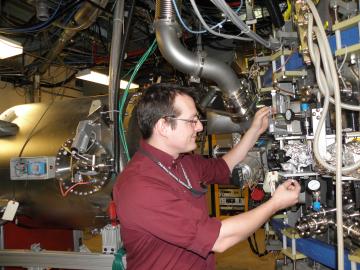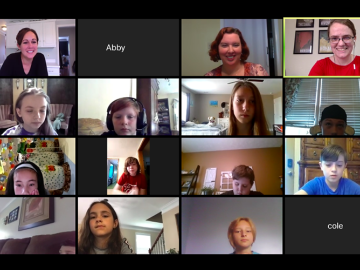
Filter News
Area of Research
- (-) National Security (44)
- (-) Nuclear Science and Technology (22)
- Advanced Manufacturing (6)
- Biological Systems (1)
- Biology and Environment (121)
- Biology and Soft Matter (1)
- Computational Biology (2)
- Computational Engineering (3)
- Computer Science (9)
- Electricity and Smart Grid (3)
- Energy Science (123)
- Functional Materials for Energy (1)
- Fusion and Fission (28)
- Fusion Energy (15)
- Isotope Development and Production (1)
- Isotopes (28)
- Materials (113)
- Materials for Computing (12)
- Mathematics (1)
- Neutron Science (125)
- Quantum information Science (4)
- Sensors and Controls (1)
- Supercomputing (106)
News Topics
- (-) Biomedical (4)
- (-) Cybersecurity (19)
- (-) Environment (6)
- (-) Fusion (9)
- (-) Grid (6)
- (-) Isotopes (5)
- (-) Machine Learning (12)
- (-) Neutron Science (9)
- (-) Physics (3)
- (-) Space Exploration (5)
- (-) Summit (2)
- 3-D Printing/Advanced Manufacturing (6)
- Advanced Reactors (12)
- Artificial Intelligence (12)
- Big Data (6)
- Bioenergy (4)
- Biology (5)
- Biotechnology (1)
- Buildings (1)
- Chemical Sciences (2)
- Computer Science (21)
- Coronavirus (3)
- Energy Storage (2)
- Exascale Computing (1)
- Frontier (1)
- High-Performance Computing (4)
- Materials (2)
- Materials Science (6)
- Molten Salt (4)
- Nanotechnology (1)
- National Security (35)
- Nuclear Energy (40)
- Partnerships (5)
- Quantum Science (1)
- Security (11)
- Simulation (1)
- Transportation (2)
Media Contacts

Lithium, the silvery metal that powers smart phones and helps treat bipolar disorders, could also play a significant role in the worldwide effort to harvest on Earth the safe, clean and virtually limitless fusion energy that powers the sun and stars.

From materials science and earth system modeling to quantum information science and cybersecurity, experts in many fields run simulations and conduct experiments to collect the abundance of data necessary for scientific progress.

The Department of Energy’s Office of Science has selected three Oak Ridge National Laboratory scientists for Early Career Research Program awards.

Juergen Rapp, a distinguished R&D staff scientist in ORNL’s Fusion Energy Division in the Nuclear Science and Engineering Directorate, has been named a fellow of the American Nuclear Society

Temperatures hotter than the center of the sun. Magnetic fields hundreds of thousands of times stronger than the earth’s. Neutrons energetic enough to change the structure of a material entirely.

Oak Ridge National Laboratory researchers have discovered a better way to separate actinium-227, a rare isotope essential for an FDA-approved cancer treatment.

Research by an international team led by Duke University and the Department of Energy’s Oak Ridge National Laboratory scientists could speed the way to safer rechargeable batteries for consumer electronics such as laptops and cellphones.

With Tennessee schools online for the rest of the school year, researchers at ORNL are making remote learning more engaging by “Zooming” into virtual classrooms to tell students about their science and their work at a national laboratory.

As a teenager, Kat Royston had a lot of questions. Then an advanced-placement class in physics convinced her all the answers were out there.

Oak Ridge National Laboratory researchers working on neutron imaging capabilities for nuclear materials have developed a process for seeing the inside of uranium particles – without cutting them open.


